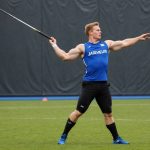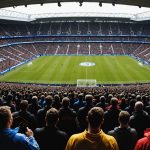Maximizing Cardiovascular Endurance: Cross-Training Strategies for Competitive Rowers
Understanding the Importance of Cross-Training for Rowers
For competitive rowers, achieving peak performance is not just about spending hours on the water or erging on a rowing machine. It involves a comprehensive approach to fitness that includes cross-training to enhance overall endurance, strength, and performance. Cross-training is essential because it targets various muscle groups, reduces the monotony of rowing-specific training, and mitigates the risk of injury.
Why Cross-Training is Crucial
Cross-training helps rowers develop a well-rounded athletic profile. Here are a few reasons why it is indispensable:
Have you seen this : Mastering the Art of Tapering: Essential Tips for Marathon Runners in the Final Week Before Race Day
- Injury Prevention: Rowing is a high-repetition sport that can lead to overuse injuries. Cross-training allows rowers to engage in low-impact activities that do not stress the same muscles, reducing the risk of injury.
- Muscle Balance: Cross-training ensures that all muscle groups are developed, preventing imbalances that can affect rowing performance. For example, rowing primarily engages the upper body, legs, and core, but cross-training can also strengthen other critical areas like the lower back and glutes.
- Cardiovascular Endurance: Cross-training can significantly improve cardiovascular endurance, which is vital for sustained performance in rowing. Activities like running, cycling, and cross-country skiing can enhance aerobic capacity and VO2 max.
High-Intensity Interval Training (HIIT) for Enhanced Endurance
High-Intensity Interval Training (HIIT) is a cornerstone of effective cross-training for rowers. Here’s why HIIT stands out:
Benefits of HIIT
- Improved VO2 Max: HIIT is superior to steady-state cardio in improving VO2 max, which is the maximum amount of oxygen the body can use during intense exercise. This is crucial for rowers as it enhances their ability to sustain high-intensity efforts over time.
- Increased Mitochondria and Capillaries: HIIT promotes the growth of mitochondria and capillaries, which are essential for energy production and oxygen delivery to the muscles. This results in better endurance and performance.
- Time-Efficient: HIIT workouts are typically shorter than traditional cardio sessions but offer greater benefits. For rowers with busy training schedules, this is particularly advantageous.
Rowing and Running: A Powerful Cross-Training Combination
Running is a popular cross-training activity for rowers due to its accessibility and the benefits it offers.
Additional reading : Unlocking Performance: The Power of Dynamic Stretching in Athletes” Warm-Up Routines
How Running Enhances Rowing Performance
- Cardiovascular Endurance: Running, especially long, slow runs, is excellent for building cardiovascular endurance. This translates directly to improved rowing performance, allowing rowers to maintain a steady pace over longer distances without fatigue.
- Leg Strength and Endurance: Running strengthens the legs, which is critical for the leg drive portion of the rowing stroke. Stronger legs enable rowers to generate more power and speed.
- Bone Density: Running is a weight-bearing exercise that helps improve bone density, a common concern for rowers who often engage in non-weight-bearing activities.
Rowing and Rowing Erging: Integrating Strength Training
Strength training is another vital component of cross-training for rowers. Here’s how it can be integrated effectively:
Benefits of Strength Training
- Muscle Mass and Strength: Strength training helps build muscle mass and strength, particularly in the upper body, legs, and core. This is essential for the powerful strokes required in rowing.
- Injury Prevention: Strengthening key muscle groups reduces the risk of injury. For example, strong core muscles help maintain proper posture and alignment during rowing, reducing the strain on the back and knees.
- Power and Endurance: Strength training, especially weight training, enhances power and endurance. This allows rowers to maintain high-intensity efforts over longer periods.
Table: Comparing Cross-Training Activities for Rowers
| Cross-Training Activity | Benefits for Rowers | Muscle Groups Engaged | Impact Level |
|---|---|---|---|
| Running | Cardiovascular endurance, leg strength, bone density | Legs, core, upper body | High impact |
| Rowing Erging | Specific rowing technique, cardiovascular endurance, muscle strength | Upper body, legs, core | Low impact |
| Cross-Country Skiing | Aerobic capacity, lower body and core strength, endurance | Full body, especially legs and core | Low to medium impact |
| Strength Training | Muscle mass and strength, injury prevention, power and endurance | Various muscle groups depending on exercises | Varies |
| Cycling | Cardiovascular endurance, leg strength, recovery | Legs, core, upper body | Low impact |
Practical Cross-Training Workouts for Rowers
Here are some practical cross-training workouts that rowers can incorporate into their training program:
Rowing and Running Combination
- Monday (Rowing Erging): 30 minutes of steady-state rowing erging to improve cardiovascular endurance.
- Tuesday (Running): 30 minutes of interval running (e.g., 4×800 meters at high intensity with 400 meters active recovery).
- Wednesday (Rest): Active recovery day with light stretching and foam rolling.
- Thursday (Strength Training): Upper body and core strength training (e.g., pull-ups, dumbbell rows, planks).
- Friday (Rowing Erging): 20 minutes of HIIT rowing erging (e.g., 20 seconds of all-out effort followed by 40 seconds of rest).
- Saturday (Cross-Country Skiing or Cycling): 45 minutes of cross-country skiing or cycling to target different muscle groups and enhance aerobic capacity.
- Sunday (Long Run): 60 minutes of steady-state running to build endurance.
Tips for Effective Cross-Training
Here are some tips to make the most out of your cross-training program:
Mix Up Your Workouts
- Vary your workouts to avoid monotony and prevent overuse injuries. For example, alternate between running, cycling, and cross-country skiing.
Focus on High-Intensity Training
- Prioritize high-intensity interval training (HIIT) over steady-state cardio for better cardiovascular benefits and improved VO2 max.
Incorporate Low-Impact Activities
- Use low-impact activities like rowing erging and cycling for recovery days or when you need to reduce the stress on your joints.
Monitor Your Heart Rate
- Use a heart rate monitor to ensure you are pushing yourself hard enough during HIIT sessions and recovering adequately during low-intensity workouts.
Listen to Your Body
- Pay attention to your body and take rest days as needed. Cross-training is meant to enhance your performance, not exacerbate injuries.
Quotes from Experts
- “Cross-training with rowing and running can help improve your strength without placing stress on your joints, enhance your cardiovascular endurance, and improve your mobility,” says an expert from Hydrow.
- “High-intensity interval training is better than slow-state steady cardio or sprints for improving cardiovascular capacity,” notes Dr. Gommaar D’Hulst, a senior scientist at ETH Zurich, Switzerland.
Maximizing cardiovascular endurance for competitive rowers requires a multifaceted approach that includes cross-training. By incorporating activities like running, rowing erging, strength training, and cross-country skiing into their training program, rowers can enhance their overall fitness, reduce the risk of injury, and improve their performance on the water. Remember, the key to effective cross-training is variety, consistency, and a focus on high-intensity training. With the right strategy, rowers can achieve peak performance and maintain a competitive edge.











